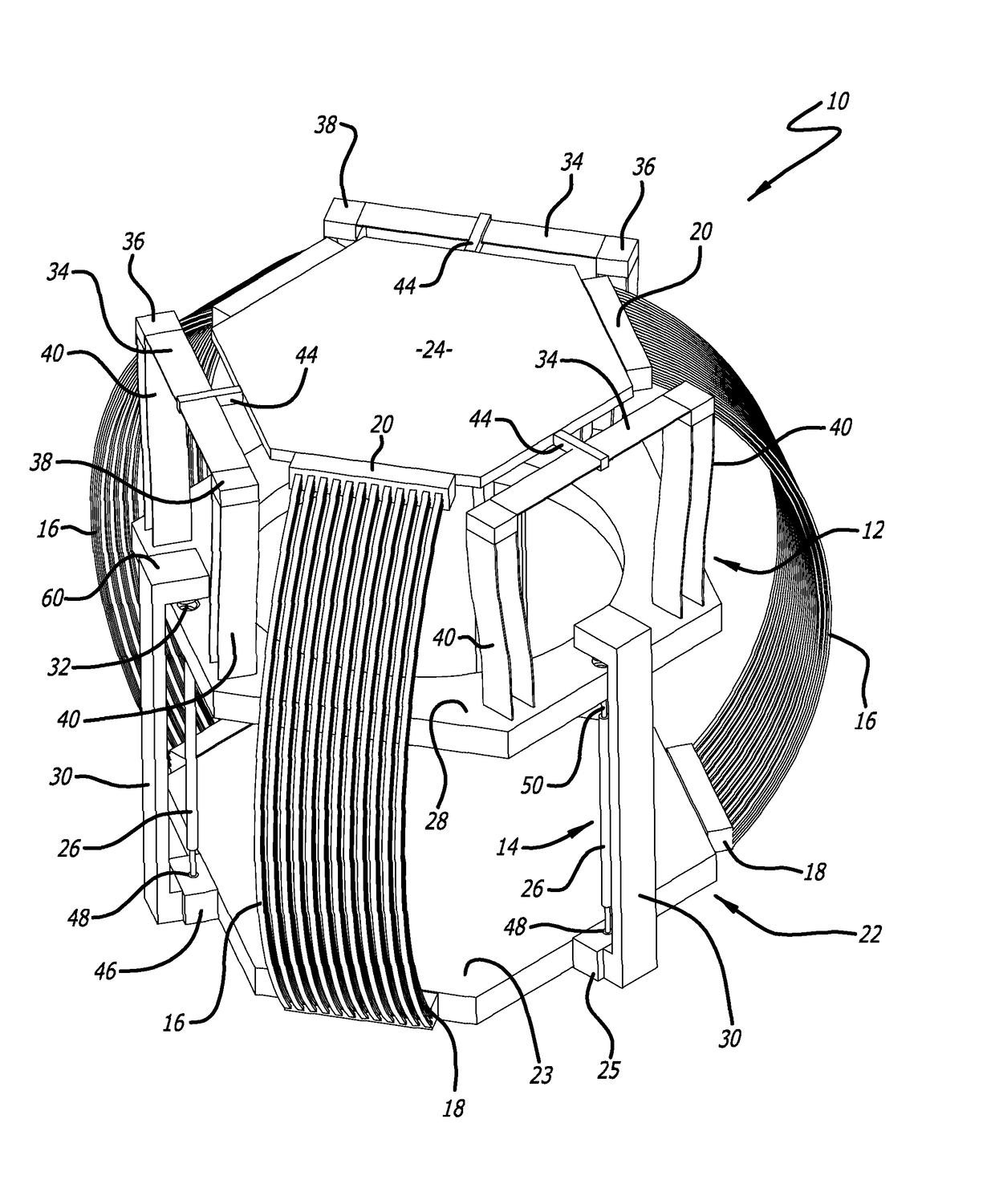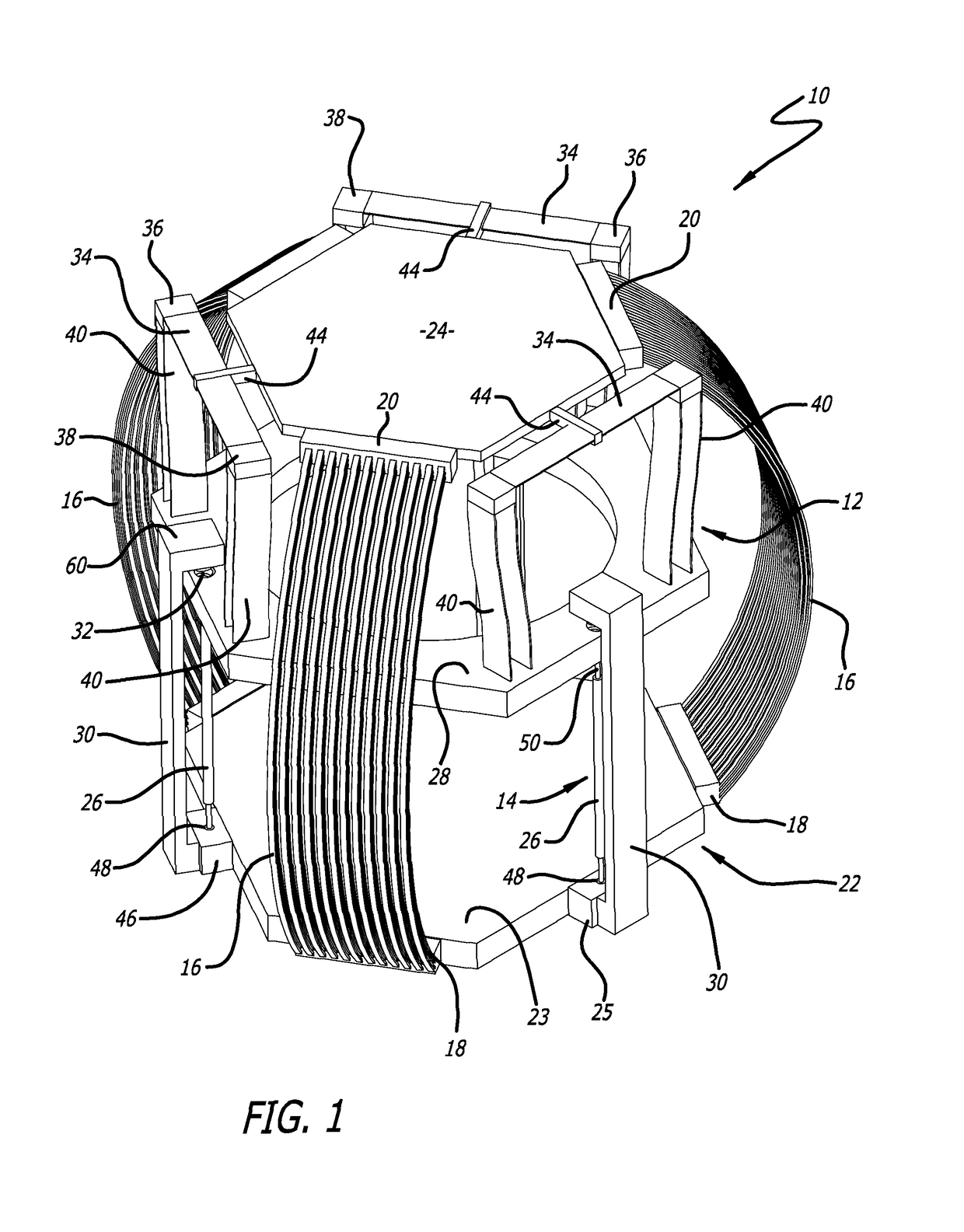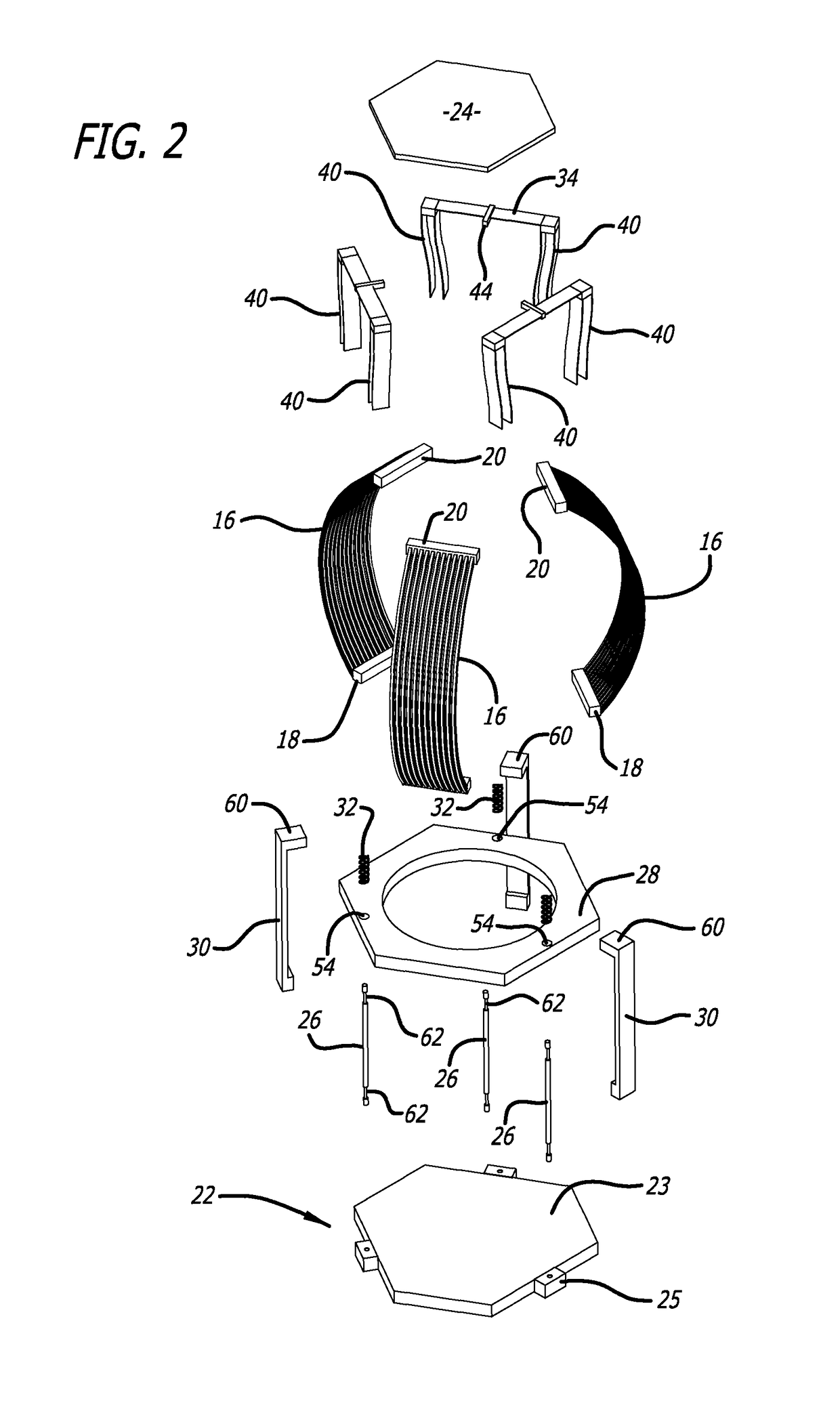Thermal straps for spacecraft
a technology for spacecraft and thermal straps, applied in the field of improved device design, can solve the problems of conflicting design goals of spacecraft engineers, second thermal straps providing low tilt stiffness and structural decoupling, and not having the benefit of negative stiffness mechanisms, etc., to achieve the effect of reducing stiffness, removing axial and tilt stiffness, and reducing stiffness
- Summary
- Abstract
- Description
- Claims
- Application Information
AI Technical Summary
Benefits of technology
Problems solved by technology
Method used
Image
Examples
Embodiment Construction
[0025]As is shown in the drawings for purposes of illustration, the present invention is embodied in a stiffness reducing system that reduces vibrations or forces transmitted from a vibrating source on the spacecraft to a vibration-sensitive object on the spacecraft through a connection that has its stiffness reduced through the use of negative-stiffness mechanisms. As the present invention is described in detail as applied to particular negative-stiffness thermal straps or NSFCLs shown in FIGS. 1-10, those skilled in the art will appreciate that these systems can be used with other structural components used to couple vibration-sensitive objects with a vibrating source on a spacecraft.
[0026]FIGS. 1-5 show one embodiment of a composite negative-stiffness thermal strap or NSFCL 10 made in accordance with the present invention. The NSFCL 10 is designed to reduce the transmission of omnidirectional vibrations between a vibration sensitive object and the vibrating source. A axial-tilt n...
PUM
 Login to View More
Login to View More Abstract
Description
Claims
Application Information
 Login to View More
Login to View More - R&D
- Intellectual Property
- Life Sciences
- Materials
- Tech Scout
- Unparalleled Data Quality
- Higher Quality Content
- 60% Fewer Hallucinations
Browse by: Latest US Patents, China's latest patents, Technical Efficacy Thesaurus, Application Domain, Technology Topic, Popular Technical Reports.
© 2025 PatSnap. All rights reserved.Legal|Privacy policy|Modern Slavery Act Transparency Statement|Sitemap|About US| Contact US: help@patsnap.com



